
Noctiluca scintillans, commonly known as the sea sparkle, and also published as Noctiluca miliaris, is a free-living, marine-dwelling species of dinoflagellate that exhibits bioluminescence when disturbed. Its bioluminescence is produced throughout the cytoplasm of this single-celled protist, by a luciferin-luciferase reaction in thousands of spherically shaped organelles, called scintillons.

The painted buttonquail is a species of buttonquail, the family Turnicidae, which resemble, but are unrelated to, the quails of Phasianidae. This species is resident in Australia where numbers are believed to be in decline. A subspecies, the Abrolhos painted buttonquail, is endemic to the Houtman Abrolhos islands.

The copper pheasant or Soemmerring's pheasant is endemic to Japan. The scientific name commemorates the German scientist Samuel Thomas von Sömmerring.

The golden swallow is a passerine in the swallow family, Hirundinidae. Two subspecies are recognised, the extinct Jamaican golden swallow and T. e. sclateri of Hispaniola. It usually inhabits the hills on the interior of islands, preferring open country. Currently, this swallow is restricted to isolated montane forests that primarily consist of the Hispaniolan pine. This species is considered to be a vulnerable species by the International Union for Conservation of Nature (IUCN); the nominate subspecies, T. e. euchrysea, is extinct. The exact cause of extinction is unknown, but likely factors include predation by introduced mammals and habitat loss, although the habitat loss theory is not supported by much evidence. The last sighting of the nominate subspecies was in Hardwar Gap, with three birds being seen on 8 June 1989.
The Abrolhos painted buttonquail is a subspecies of the painted buttonquail endemic to the Houtman Abrolhos. It is common on North Island, and also occurs on other islands of the Wallabi Group, namely East Wallabi, West Wallabi, Seagull and Pigeon Islands.

Several extinct species have been postulated, but owing to a lack of evidence they can only be regarded as hypothetical extinct species. They have caused confusion, as they may have been a separate species, a subspecies, an introduced species or a misidentification.
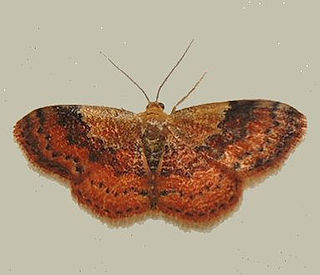
Leptostales is a genus of moths in the family Geometridae.

Anthanassa frisia, the Cuban crescentspot, Cuban checkerspot or Cuban crescent, is a butterfly of the family Nymphalidae. Subspecies tulcis is known by the common names pale-banded crescent or Tulcis crescent; it is treated as a species by some authors. The nominate subspecies is found in the West Indies and southern Florida, with strays to northern Florida. Subspecies tulcis is found from Argentina north through Central America and Mexico to southern Texas, strays to west Texas and southern Arizona. Other subspecies are resident to South America.
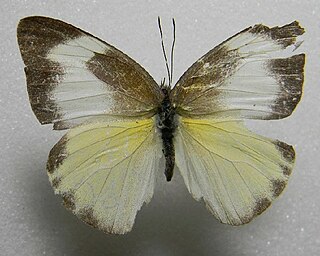
Appias drusilla, the Florida white or tropical white, is a butterfly in the family Pieridae. It is found in tropical America from Brazil north to southern peninsular Florida and the Florida Keys and Antilles. It frequently visits coastal Texas and is a rare stray to Nebraska and Colorado. The habitat consists of tropical lowland evergreen or semideciduous forests.
Ethmia abraxasella is a moth in the family Depressariidae. It is found in Jamaica, Haiti, the Dominican Republic, Puerto Rico, Cuba and the Bahamas. It has also been recorded from southern Florida in the United States.
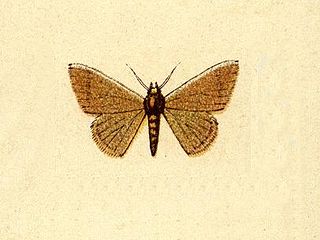
Leptostales kinstonensis is a moth of the family Geometridae. It is found on the Antilles and St. Vincent.
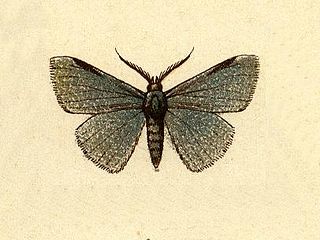
Leptostales virgota is a moth of the family Geometridae. It is native to the Caribbean, primarily found on Puerto Rico and Jamaica.
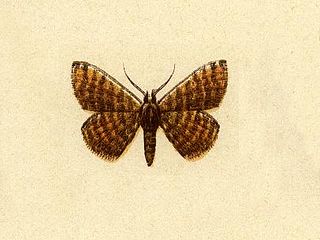
Leptostales phorcaria is a moth of the family Geometridae. It is found on Puerto Rico, Hispaniola, Jamaica, the Bahamas and St. Vincent.

Somena scintillans, the yellow tail tussock moth, is a moth in the family Erebidae described by Francis Walker in 1856. It is found in northern India, Sri Lanka, Myanmar and the Andaman Islands. Though considered a minor pest, larva can sporadically be a serious pest.
Urogonodes scintillans is a moth in the family Drepanidae. It was described by William Warren in 1896. It is found in New Guinea.
Heteropan scintillans is a moth in the Zygaenidae family. It was described by Francis Walker in 1854 from Sri Lanka. One subspecies is recognized, Heteropan scintillans caesiusJordan, 1923.
Leptostales laevitaria, the raspberry wave moth, is a species of moth in the family Geometridae. It was first described by Geyer in 1837 and it is found in North America.
Leptostales crossii, or Cross's wave moth, is a species of geometrid moth in the family Geometridae.
Leptostales hepaticaria is a species of geometrid moth in the family Geometridae.
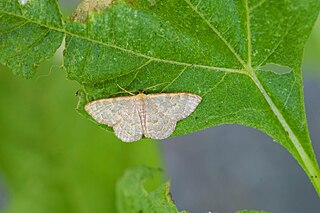
Leptostales pannaria, the pannaria wave moth, is a species of geometrid moth in the family Geometridae.













